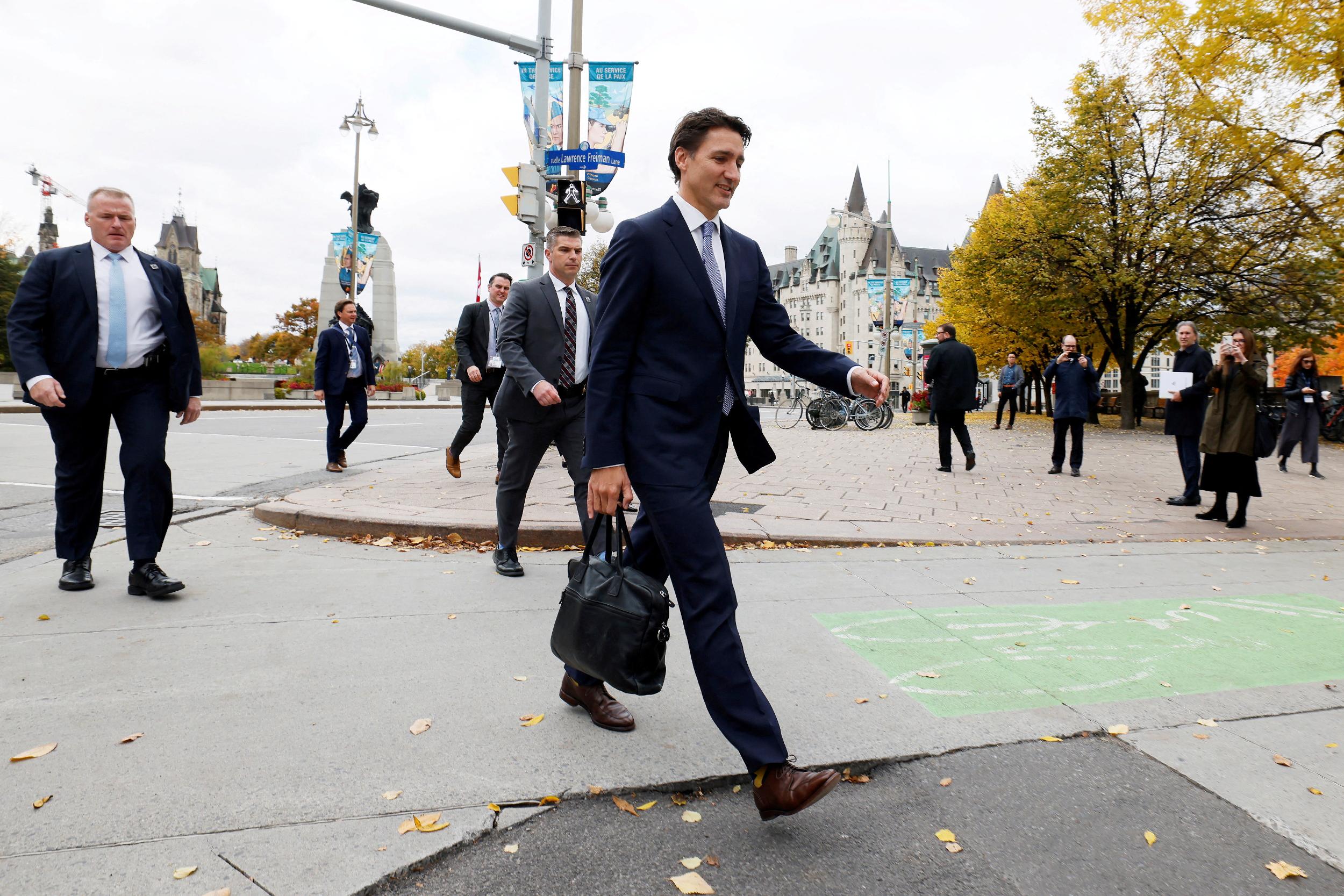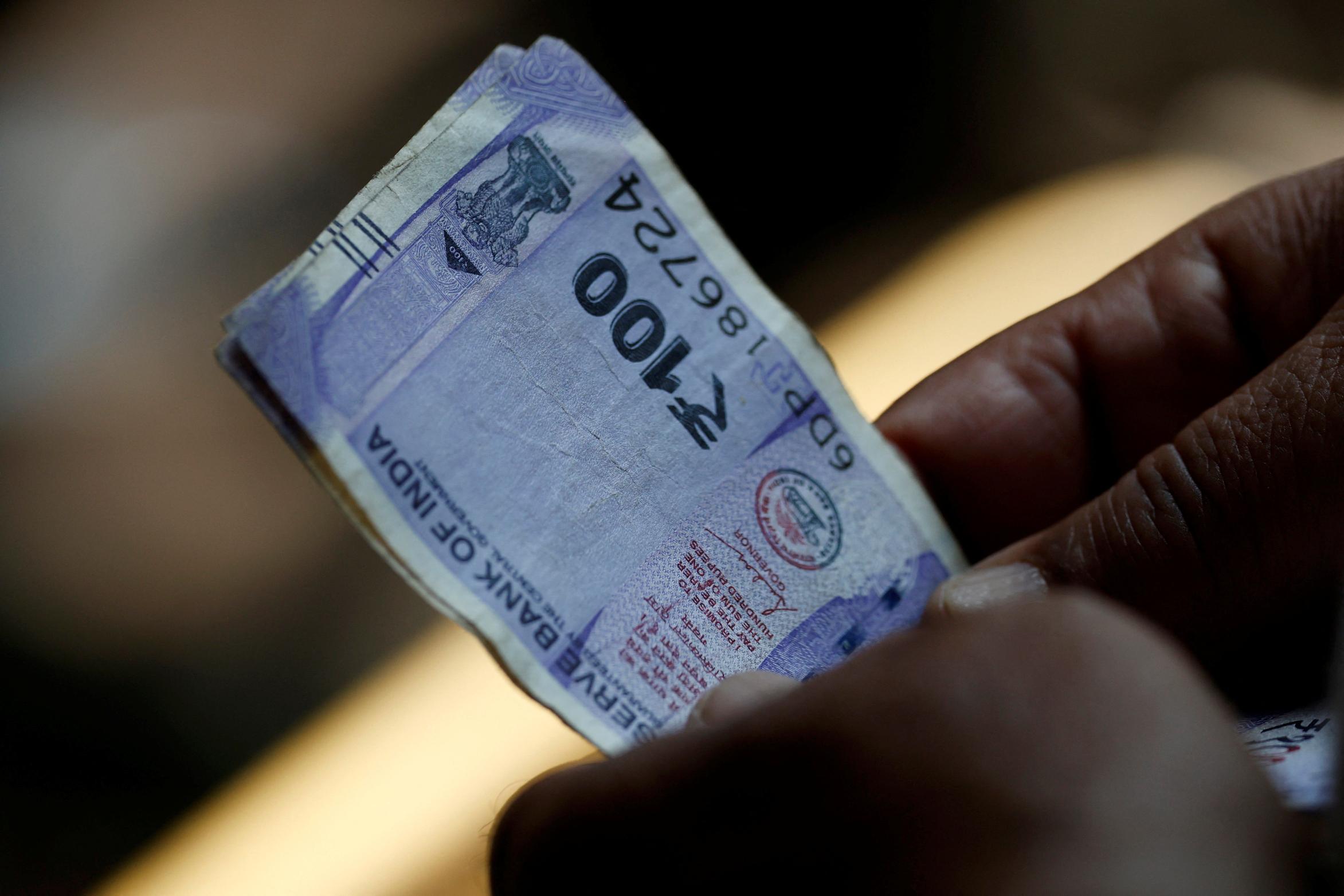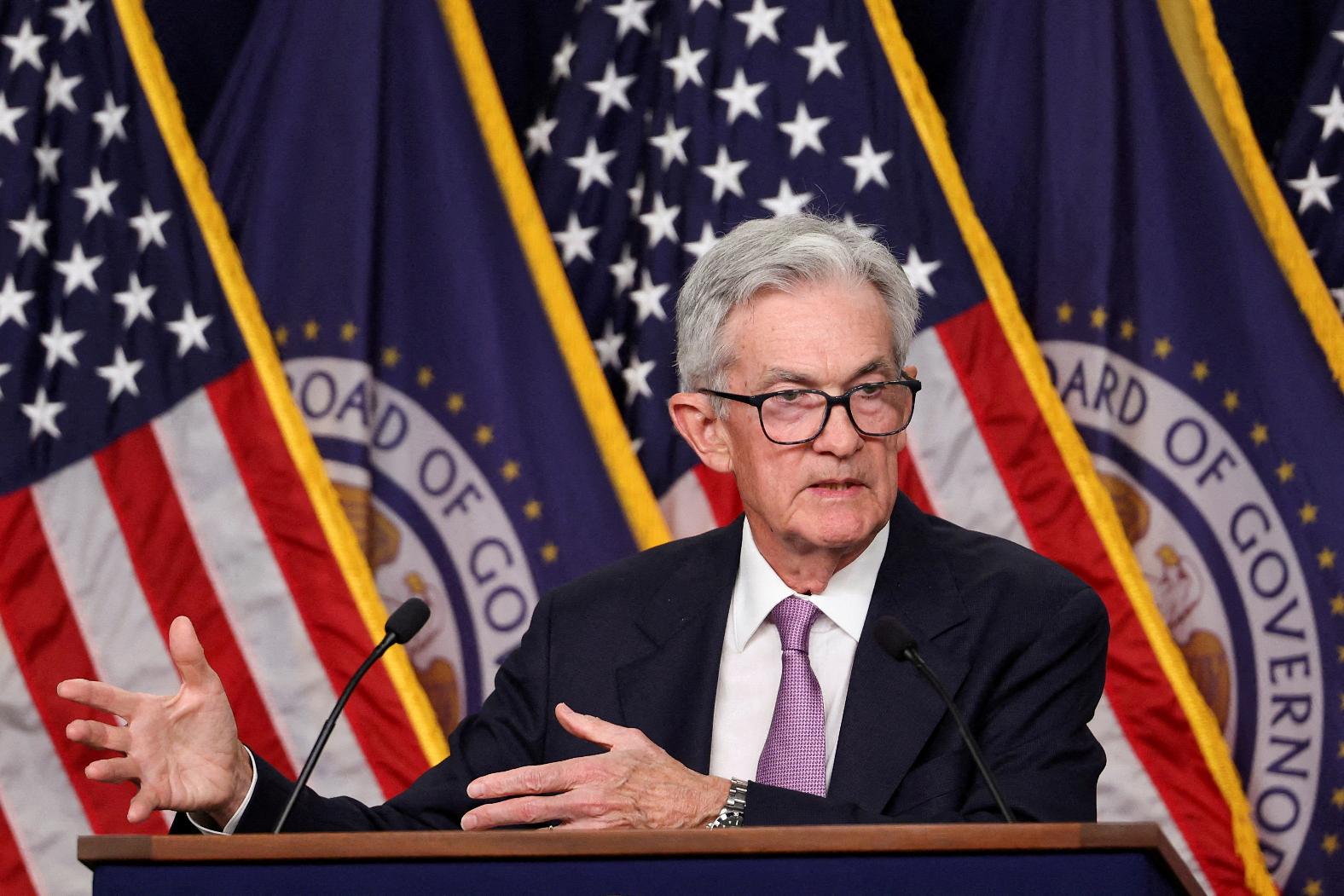
2024-09-19 11:14
JAKARTA, Sept 19 (Reuters) - The world's biggest palm oil exporter Indonesia will introduce a new set of monthly levies in a bid to improve competitiveness against rival edible oils, a regulation published on Thursday by its finance ministry showed. Under the new rules, which take effect on Saturday, levies for crude palm oil exports will be set at a 7.5% rate of the reference price set periodically by the government. The more refined palm oil products will be charged lower levy rates, at between 3% and 6% of the reference rates, the document showed. Indonesia currently imposes a levy of between $55 and $240 per metric ton for crude palm oil exports, depending on a set of price brackets for the monthly reference price. "Certainly this will make Indonesian origin more competitive especially in October. Malaysian origin need to get lower in order to compete," said Paramalingam Supramaniam, director at Selangor-based brokerage Pelindung Bestari. Malaysia is the world's second largest palm oil exporter. Indonesia made changes to "improve palm oil competitiveness and provide added value to farmers' fresh fruit bunches", the finance ministry decree said. A government official has previously said that the changes were necessary to compete with rivals such as soyoil and sunflower oils, against which palm is losing its competitive edge. The levies are collected to help finance palm oil programmes such as a replanting subsidy for smallholders and for the country's biodiesel programme. Sign up here. https://www.reuters.com/business/energy/indonesia-issues-new-palm-oil-levies-rule-effective-this-weekend-2024-09-19/

2024-09-19 10:47
ROME, Sept 19 (Reuters) - A storm system that has wreaked havoc across central Europe brought devastating floods to the northern Italian region of Emilia-Romagna on Thursday for the second year in a row, forcing people to leave their homes and schools to close. A low-pressure system named "Boris" caused the worst flooding in more than two decades from Romania to Poland over the past week, killing at least 24 people before moving west. "I have to say that it rained non-stop for more than 48 hours, non-stop. Boris has clearly decided to pick on our region," the acting president of Emilia-Romagna Irene Priolo told RAI public radio. She said about 1,000 people had been evacuated overnight from their homes, but noted this was far lower than the 45,000 who had been forced to leave by the previous floods, which affected a larger area. In May 2023, two rounds of torrential rain and mudslides killed 17 people and caused 8.5 billion euros ($9.5 billion) worth of damage in Emilia-Romagna, according to regional authorities. On Thursday, schools were closed and rail services suspended in several provinces. In the town of Lugo, near Ravenna, authorities ordered the evacuation of all ground floor residences, after the local Senio river broke its banks. "We are in a full emergency ... the event is very similar to what we had last May," the Mayor of Ravenna, Michele De Pascale, told Radio 24 broadcaster, adding however that this year's floods were more concentrated geographically. Priolo said the 250 millimetres (9.8 inches) of water that fell in some areas was "comparable if not in some cases superior" to the rains from last year, but noted that only three rivers had overflowed, compared to 23 previously. The national fire department said it carried out more than 500 rescue operations in Emilia-Romagna, including with the use of helicopters. Floods and mudslides were also affecting the neighbouring regions of Tuscany and Marche. ($1 = 0.8973 euros) Sign up here. https://www.reuters.com/world/europe/italys-emilia-romagna-region-hit-by-new-devastating-floods-2024-09-19/

2024-09-19 10:25
BRUSSELS, Sept 19 (Reuters) - The sum of 160 million euros from the proceeds of frozen Russian assets will be allocated to meet Ukraine's urgent humanitarian needs for this winter, European Commission President Ursula von der Leyen said on Thursday. Russia has knocked out about 9 gigawatts (GW) of Ukraine's energy infrastructure, which von der Leyen said was the "power equivalent of the three Baltic states". On top of the cash injection, the EU will help with repairs and additional exports. The International Energy Agency said on Thursday that Ukraine could face a shortfall of 6 GW this winter as peak electricity demand increases. A fuel power plant is being dismantled in Lithuania and will be rebuilt in Ukraine, where 80% of the country's thermal plants have been destroyed. A third of Ukraine's hydropower is also out. "We aim to restore 2.5 GW of capacity, which is 15% of Ukraine's needs," Von der Leyen said, referring to repairs. In addition, the EU will increase exports to supply 2 GW of electricity to Ukraine, she said. Sign up here. https://www.reuters.com/world/europe/eu-send-160-million-euros-frozen-russian-assets-ukraine-2024-09-19/

2024-09-19 10:17
Opposition vows to remove consumer carbon tax if elected Industrial carbon tax and other measures could still meet 2030 goal Consumer carbon tax blamed for inflation despite rebates Sept 19 (Reuters) - Canada could meet its 2030 emissions target without a carbon tax on consumers, some analysts say, as the Liberal government faces mounting political pressure to remove it. The tax has long been criticized by the opposition Conservative Party, which has vowed to "axe the tax" if it wins power, but support has recently eroded even among the policy's former backers. The carbon tax is intended to help Canada cut emissions of climate-warming carbon dioxide by 40%-45% below 2005 levels by 2030. The next election will be held by October 2025 and polls show Prime Minister Justin Trudeau's Liberals will lose badly to the Conservatives. Even if Ottawa scraps its carbon tax that consumers pay on gasoline and other fuels, Canada could reach the 2030 goal by leaning on other policies, said Mark Zacharias, executive director at think-tank Clean Energy Canada. The portion of carbon tax that applies to industrial sites such as oil sands mines and cement plants is less contentious than the consumer tax. The industrial tax will play a larger role in cutting emissions, along with a proposed oil-and-gas emissions cap and regulations to reduce methane pollution, Zacharias said. The tax on consumers will deliver only 8%-9%, or 19 million to 22 million metric tons, of the emissions cuts Canada plans to achieve by 2030, according to the Canadian Climate Institute. "The consumer carbon tax is a political albatross right now and I don't know if there's going to be any recovery from the damage and misinformation around it," Zacharias said. The Conservatives blame the carbon tax for contributing to inflation, even though it is designed to be revenue-neutral and around 80% of Canadians receive more in rebates than they pay in tax. The consumer carbon tax applies to much of Canada's emissions from transportation and buildings, but government rebates for electric-vehicle purchases and building retrofits are also helping trim emissions from those sectors, said Dale Beugin, the climate institute's executive vice president. Kathryn Harrison, a political science professor at the University of British Columbia, said however that Canada cannot reach its 2030 goal by targeting big industrial polluters alone. There is risk that the industrial tax, which will account for 39% of emissions cuts by 2030 according to the institute's estimates, will also become a political target, Beugin said. British Columbia's left-leaning premier David Eby said last week he would scrap the province's carbon tax if Ottawa dropped its legal requirement for one. The same day, federal New Democratic Party Leader Jagmeet Singh said he favored a different approach to addressing climate change when asked if he supported the consumer carbon tax, without giving details. The Conservatives have not said whether they will maintain the industrial carbon tax if they win power. Sign up here. https://www.reuters.com/sustainability/climate-energy/canada-may-reach-2030-emissions-goal-without-unpopular-carbon-tax-2024-09-19/

2024-09-19 10:08
MUMBAI, Sept 19 (Reuters) - The Indian rupee hit a two-month high on Thursday, aided by likely portfolio inflows and a rally in the Chinese yuan after the Federal Reserve delivered a 50 basis points interest rate cut. The rupee ended at 83.68 against the U.S. dollar, up 0.1% from its previous close of 83.75. The currency scaled as high as 83.57 in the session, its strongest since July 18. Asian currencies gained, with the offshore Chinese yuan , a closely watched peer of the rupee, rising 0.4% to 7.06, its strongest level since May 2023. The Fed's larger-than-usual rate reduction propelled global stocks higher as well. India's benchmark equity indices Sensex (.BSESN) , opens new tab and Nifty 50 (.NSEI) , opens new tab hit record highs before ending higher by about 0.3% and 0.1%, respectively. Dollar sales from large foreign banks, likely on behalf of custodial clients aided the rupee, a trader at a large private bank said. Price-action signals that the Reserve Bank of India "is ok with rupee appreciation," but will have to see how much of a gain they allow before stepping in, the trader added. Traders expect the RBI to continue absorbing dollar inflows to bolster its foreign exchange reserves while also ensuring that India's exports remain price-competitive. The dollar index was choppy, falling to its year-to-date low immediately after the Fed decision on Wednesday but rebounding quickly, only to head lower again in Asia trading. It was last quoted at 100.5, down 0.4%. "At this stage, the risk-reward remains tilted in favour of dollar strength rather than weakness and the outlook is balanced," Charu Chanana, head of FX strategy at Saxo, said. Meanwhile, dollar-rupee forward premiums rose with the 1-year implied yield touching 2.33%, its highest level since April last year. Sign up here. https://www.reuters.com/markets/currencies/rupee-rises-two-month-peak-boosted-by-yuan-rally-likely-inflows-2024-09-19/

2024-09-19 10:04
A look at the day ahead in U.S. and global markets from Mike Dolan After a typical skittish first-day reaction, world markets are on Thursday embracing the new Federal Reserve stance as insurance on the holy grail of a soft economic landing. Fed boss Jerome Powell described Wednesday's outsize half-point interest rate cut as a 'recalibration' rather than some panicky emergency, and investors are taking the move as a sign the Fed will seek that new 'neutral' quickly without necessarily being forced into it by a weakening economy. There was only one dissenter - Fed governor Michelle Bowman - who clearly felt the economy only needed a quarter point cut. All in, that's precisely the balance prayed for by stock markets all year. And even though Wall Street (.SPX) , opens new tab recoiled by the close, futures are surging 1-2% again to new records ahead of today's bell. Treasuries seem comfortable that they had it all priced in advance, with two-year yields hovering near two-year lows just under 3.6% on Thursday and the 2-to-10 year yield curve gap edging up to 10 basis points - its most positive since mid-2022. The dollar briefly set a new low for the year after the Fed cut, but has since steadied, with dollar/yen jumping ahead of the Bank of Japan's latest decision on Friday. Sterling hit its best level in 30 months as the Bank of England is expected to pass on another rate cut later today. Shifting the emphasis from inflation to the jobs market, Powell and colleagues - via his press conference and the Fed's updated economic and rate projections - signalled another 50 basis points of easing by yearend and a further 100bps in 2025. Cutting inflation forecasts to within a tenth of a percentage point of the Fed's 2% target next year and nudging their unemployment rate call up to 4.4%, they set fair on a return to what officials now see as the long-term neutral rate. And even though they took that 'long-term' rate up a tenth to 2.9%, they expect to get there by 2026 - about 200bps lower than the new policy rate of 4.75-5.00%. Even though the Fed indicated another 50bps of cuts over the two remaining meetings of this year, futures have moved ahead to price more than 70bps - and almost 200bps of cuts by this time next year. Bank of America, for one, now sees 75bps of cuts by yearend - arguing that emphasis on keeping ahead of any labor market weakness may see the Fed "pushed into deeper cuts." With jobs data super sensitive from here on, the weekly jobless claims numbers on Thursday will be a first test. On the flip side, Wednesday's big cut underscores what appears to be a rebounding housing market and that should support the ongoing expansion - running at an estimated 3% in the current quarter. As 30-year fixed mortgage rates have now fallen to two-year lows of 6.15%, housing starts surged more than 15% last month. As for financial markets, the basic rule of thumb is that when the Fed has previously started cutting rates into an ongoing economic expansion then stocks gain more than 16% on average over the following year - led by both large cap and small cap growth stocks. Futures on the small cap Russell 2000 index were up almost 3% ahead of Thursday's open. With U.S. futures on a tear on Thursday, world stocks rallied broadly in the slipstream. Tokyo (.N225) , opens new tab and Hong Kong (.HSI) , opens new tab benchmarks climbed 2%, with the former flattered by the yen's pullback and the latter by the lock-step rate cut from HK's monetary authority. Chinese stocks also rose on hopes the Fed move will give Beijing policymakers room to ease as soon as Friday - helped by a strengthening of the offshore yuan to its best levels since May last year. European stocks (.STOXXE) , opens new tab, (.FTSE) , opens new tab were 1% higher too. Elsewhere, the Fed's easing bug was less infectious. Even though the BoE on Thursday is expected to defer a second UK rate cut of the year to November, it will update on its ongoing process of balance sheet reduction. If it repeats prior years' targets of a 100 billion pounds runoff over the next year, that could reduce active BoE bond sales sharply because a heavy schedule of maturing debt over that horizon will see bonds fall off organically over the coming 12 months. Norway also held the line and its central bank left rates unchanged at 4.5% on Thursday. And Brazil went in the opposite direction and raised its rates for the first time in two years on Wednesday. Key developments that should provide more direction to U.S. markets later on Thursday: * Bank of England policy decision, meeting minutes and annual balance sheet target; Reserve Bank of South Africa and Central Bank of Turkey make policy decisions * US weekly jobless claims, September Philadelphia Fed business survey, August existing home sales, Q2 current account * European Central Bank board member Isabel Schnabel speaks * US Treasury sells 10-year inflation-protected securities * US corp earnings: FedEx, Lennar, Darden Restaurants, Factset Sign up here. https://www.reuters.com/markets/us/global-markets-view-usa-2024-09-19/
